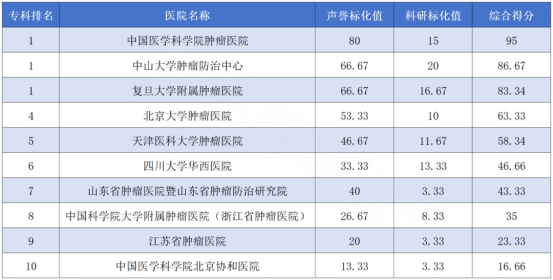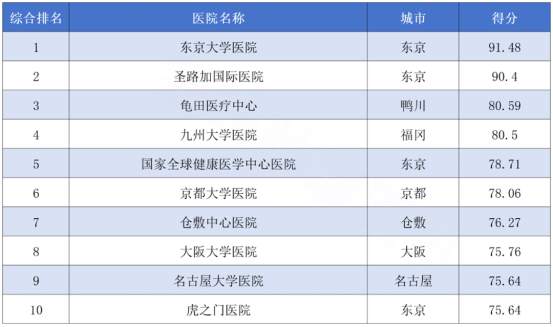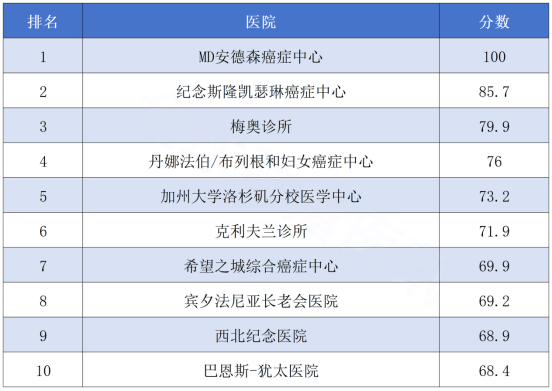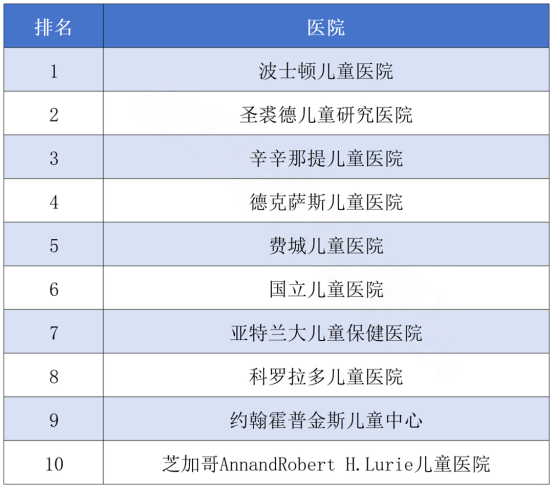科学文献
There is no need to panic about cancer. Following the following five suggestions can effectively prolong the life of cancer patients and improve their quality of life:
In today's era of rapid medical technology change, although cancer is still a major problem in people's minds, the emergence and widespread application of advanced treatment methods such as new generation targeted drugs, innovative immunotherapy, proton therapy and electric field therapy have opened up a new way of survival for the majority of cancer patients. On this basis, patients and their families are increasingly concerned about how to prolong survival while improving the quality of life, which has become an important issue of general concern to all sectors of society.
1. Correctly understand cancer and avoid excessive panic
After being diagnosed with cancer, patients and their families are often overwhelmed by great fear and anxiety. However, it is important to realize that not all cancers are fatal. For some cancers with lower malignancy or patients diagnosed at an early stage, it is possible to achieve "clinical cure" through standardized treatment.
When evaluating the probability of cancer cure, the clinic usually uses the "5-year survival rate" as a reference indicator. This indicator represents the percentage of patients who are still alive after 5 years of treatment. If the patient's tumor does not recur within 5 years after treatment, it can usually be considered that the patient has achieved a state of "clinical cure". Generally speaking, the higher the 5-year survival rate, the greater the probability of cure for this cancer.
The "clinical cure rate" of these five types of cancer exceeds 90%
The National Cancer Institute database (also known as the "SEER database", which is currently one of the largest databases in the world with the highest clinical reference value) records the disease conditions, incidence rates, and mortality rates of more than one million patients with malignant tumors.
After a detailed statistical analysis of the database, I have compiled a comprehensive summary of the 5-year survival rates of 32 common types of cancer in clinical practice, both overall and at different stages, in order to clearly show the prognosis of each type of cancer. Please see the table below for detailed data.

The table above shows that the five-year relative survival rates of papillary thyroid cancer, follicular thyroid cancer, prostate cancer, skin melanoma, breast cancer and Hodgkin's lymphoma are relatively high, reaching 99.7%, 98.5%, 96.8%, 93.7%, 90.6% and 90.2% respectively. This fully demonstrates that for these types of cancer patients, as long as they can be diagnosed early and scientific and standardized treatment measures are taken, the possibility of achieving "clinical cure" is relatively high, and the prognosis is also relatively optimistic. Therefore, the general public does not need to panic excessively, but should actively cooperate with doctors' diagnosis and treatment and build confidence in defeating the disease.
2. Early standardized diagnosis to avoid delay in the best treatment opportunity
The first task of treating a disease is to make a “clear diagnosis”, especially for highly mutated cancers. If the early diagnosis is wrong, it will inevitably affect subsequent treatment. If “anti-cancer treatment” is compared to “marching to war”, before deploying troops, it is necessary to conduct a comprehensive and detailed examination to understand the enemy situation. The more detailed the examination, the more thorough the understanding of the condition, and the more helpful it is for doctors to “tailor” and develop individualized and standardized treatment plans. As the saying goes, “know yourself and know the enemy, and you will never be defeated in a hundred battles.” As a complex disease, tumors are often more complicated to diagnose, and the clinical diagnosis mainly involves the following contents:
Initial clinical diagnosis
The doctor makes a preliminary diagnosis based on the patient's medical history, symptoms, laboratory tests, imaging tests, etc.
Pathological diagnosis
Through puncture/resection and other means, a small piece of tissue is taken out from the tumor lesion and sent to the pathology department. The doctor in the pathology department will observe the cell morphology under a microscope. Once cancer cells are found, it can be diagnosed as cancer. This is also the "gold standard" for diagnosis.
Determine the tumor stage, size, and number
Once cancer is diagnosed, the doctor may also perform comprehensive imaging examinations to determine the tumor stage (early, middle or late stage), tumor diameter, tumor number, etc.
Cancer Gene Testing
Some patients may also be recommended by their doctors to undergo genetic testing. Because cancer is caused by changes in the DNA that controls how cells grow and divide, each patient's cancer has a unique combination of genetic changes. Cancer genetic testing is a test method that identifies this unique DNA change. Its main functions are as follows:
During cancer detection, it is important to ensure the integrity of the test to avoid any possible omissions. Given the limited resources of pathological specimens for cancer patients, once the lesions are not found in the initial small panel test, or when new targets and targeted drugs appear in the future, it may be a difficult task for patients to re-obtain tumor tissue samples. Therefore, through genetic testing, especially whole-genome sequencing, we can fully and deeply understand the genetic mutations of cancer patients, thereby providing a solid molecular basis for subsequent treatment. This method not only improves the accuracy of the test, but also provides a more scientific and personalized treatment plan for patients.
Precisely guide the application of targeted drugs: The effectiveness of current targeted therapies is limited to cancer cells with specific mutation types. Genetic testing, as a precise means, can reveal genetic variations in cancer and provide a key basis for developing personalized treatment plans, especially in the selection of targeted drugs. For example, after lung cancer patients undergo genetic testing and are found to have EGFR gene mutations, they can choose targeted drugs targeting the mutation, such as Tarceva and Iressa, to achieve precise treatment and gain more chances of survival. However, it is worth noting that not all targeted drug applications require prior genetic testing.
3. Fight cancer and adhere to scientific and standardized treatment
As a highly mutated and complex disease, the ideal treatment for cancer should be to follow authoritative treatment guidelines [such as the Chinese Society of Clinical Oncology (CSCO) guidelines, the National Comprehensive Cancer Network (NCCN) guidelines, the European Society for Medical Oncology (ESMO) guidelines, etc.] and "tailor" individualized treatment plans based on many factors such as the patient's age, condition, tumor stage, physical condition, etc.
Why choose an authoritative oncology hospital?
Yu Jinming, deputy to the National People's Congress and director of Shandong Cancer Hospital, stressed that cancer patients only have one best chance for treatment. If the disease progresses to the middle or late stage due to misdiagnosis or mistreatment, even if more resources are invested, it will be difficult to recover, which will greatly reduce the possibility of cure and seriously affect the patient's survival. Therefore, it is crucial for cancer patients to choose an authoritative cancer hospital that suits their condition and follow a scientific and standardized treatment plan. Authoritative cancer hospitals usually have the following advantages:
1. It has a strong pathology department. Pathological biopsy is the gold standard for tumor diagnosis and provides an important basis for subsequent treatment.
2. We have an experienced team of experts who can respond quickly to various emergencies of patients and provide timely and effective treatment.
3. Keep pace with the international standards, continuously update diagnosis and treatment experience and technical information, and ensure the advancement and accuracy of cancer diagnosis and treatment.
4. Conduct research on new drugs and technologies in sync with international standards to expand treatment options and opportunities for cancer patients.
Ranking of the Top Ten Cancer Hospitals in China, Japan and the United States
The Medical Department of Global Oncology Doctors Network has compiled the top ten lists of oncology specialties in China, Japan, and the United States for reference by cancer patients.
2021 Fudan University Chinese Hospital Specialty Comprehensive Ranking (Oncology)

▲Data source: Health World, table created by: Global Oncologists Network
2021 Japan Newsweek Best Hospital Ranking

2022~2023 US News Cancer Specialty Hospital Rankings

▲Compiled by Global Oncologists Network
2022~2023 US News Children's Cancer Hospital Rankings

4. Actively enhance the body's immunity
Tumors are the product of malignant transformation of normal cells in the body, and are characterized by continuous proliferation and metastasis in the body. Due to the presence of tumor antigens, they will be recognized by the body's immune system, thereby stimulating a specific immune response. The immune function of tumor patients is generally in an unbalanced state, and surgery, radiotherapy and chemotherapy can also cause certain damage to the body's immune function. Therefore, after clinical treatment, adjusting the immune function as soon as possible will help prevent tumor recurrence and metastasis, which is also the top priority of tumor treatment. The main methods to enhance the body's immunity are as follows:
Supplement nutrients through food
During the treatment process, cancer patients need nutrients (such as energy, fat, protein, vitamins, carbohydrates, etc.) that can be supplemented through food. Maintaining a balanced nutrition helps to enhance the immune function of cancer patients, improve tolerance to anti-cancer treatment, and improve overall health.
Certain specific nutrients, such as vitamin C/E, probiotics, trace elements, prebiotics, amino acids, etc., can not only provide energy and nutritional substrates, but also stimulate immune cells, maintain intestinal barrier function, enhance immune response, and help improve the clinical outcomes of cancer patients.
The intestine has a huge number of neurons and trillions of microorganisms, encodes more than 3 million genes, and produces thousands of metabolites. About 70% of the human body's immune cells are concentrated in the intestine, so the intestine is also an important immune organ of the human body.
For most cancer patients, regulating intestinal flora and maintaining intestinal health can help enhance the efficacy of current anti-cancer drugs, improve the body's immunity, reduce the side effects of surgery and chemotherapy (such as gastrointestinal reactions caused by chemotherapy, oral mucositis caused by radiotherapy, etc.), and improve the effectiveness of tumor immunotherapy.
Immunomodulators
Immunomodulators are non-specific immunotherapies that help the immune system fight viruses, bacteria, cancer cells, etc. Common ones include thymosin, interleukin, interferon, etc. Among them, thymosin is one of the most commonly used immunomodulators in clinical practice.
Clinicians often give cancer patients thymosin or interferon at the same time as chemotherapy and radiotherapy to help the immune system fight cancer cells.
Adoptive cell transfer
Adoptive immune cell therapy technology collects the body's own immune cells, amplifies them in vitro, enhances their targeted killing ability, and then returns them to the patient's body to kill mutated cells, cancer cells or pathogens in tissues or blood. Commonly used cells include NK cells, DC cells, T cells, etc.
1. Natural Killer Cells (NK Cells)
NK cells belong to the third type of lymphocytes in the human body and are known as the "core cells of natural immunity." They have two main anti-cancer effects:
On the one hand, NK cells patrol blood vessels throughout the body, exercising immune surveillance functions at all times to promptly detect "aliens" (such as cancer cells), and by secreting cytokines and chemokines, they play the role of regulatory cells of the body's immune system and activate the killing effect of T cells.
On the other hand, by releasing perforin and granzyme, it directly kills cancer cells and builds the first line of defense against cancer.
2. Dendritic cells (DC cells)
Dendritic cells are the initiators of the body's immune response and are also the most powerful antigen-presenting cells known in the body. Their characteristics are that they stimulate the proliferation of initial T cells and promote T cell enrichment; at the same time, they fully activate T cells in the body and promote T cells to eliminate tumors.
3. T cells
"Cytotoxic T cells (CTL)", or "killer T cells", are cells that monitor and kill target cells when needed. CTL cells have a memory function for target cells carrying antigens. Once such target cells are found, they can stimulate effector cytotoxic T cells to eliminate cancer cells. Common therapies include CAR-T therapy, TILs therapy, TCR-T therapy, etc.
Among them, CAR-T cells are the best, and many products have been approved for marketing, mainly targeting various blood tumors. At the same time, in the past two years, we have also received good news that TILs therapy and TCR-T therapy have been approved for marketing.
5. Regular follow-up to prevent cancer cells from resurfacing
After receiving effective treatment, cancer patients still need to strictly follow the doctor's advice and undergo regular checkups. Checkups include blood tests, imaging tests, tumor marker tests, and physical examinations, etc., to ensure that doctors have a comprehensive understanding of the patient's overall condition after treatment and to promptly detect and treat possible recurrence or metastasis of cancer cells. Generally speaking, patients should undergo a checkup every three months in the first year after surgery, and every six months in the second year, and so on. The specific checkup time and items must strictly follow the doctor's advice and guidance.
Message from the Editor
Cancer is a complex and ever-changing disease. Its treatment process is not achieved overnight, but requires joint efforts and cooperation between patients, their families and doctors. To achieve the best treatment effect, patients and their families need to be mentally prepared for a long-term battle. The first priority is to quickly and accurately establish a diagnosis and seek the assistance of authoritative hospitals and professional doctors to develop a scientific and standardized treatment plan to avoid blindly adopting a one-size-fits-all treatment method.
Secondly, after traditional treatments such as surgery, radiotherapy and chemotherapy are completed, a combination of methods such as diet therapy, immune cell therapy and intestinal flora regulation should be used according to the patient's specific situation, aiming to enhance the patient's immune function, consolidate the treatment effect, and reduce the risk of recurrence.
Finally, after treatment is completed, patients should strictly follow the doctor's instructions for regular checkups to ensure that any potential recurrence or metastasis can be detected and treated in a timely manner.
In this process, the philosophy of "water turns into waterfalls when it reaches a dead end, and people are reborn when they reach a dead end" also applies. Patients and their families should have firm confidence, actively face the challenges of treatment, persist in the fight against cancer, and never give up. Through joint efforts, we hope that every patient can overcome the disease and regain health and a new life.
References
[1] Zheng RS, et al. [Cancer incidence and mortality in China, 2022]. Zhonghua Zhong Liu Za Zhi. 2024 Mar 23; 46(3): 221-231. Chinese.
https://www.sciencedirect.com/science/article/pii/S2667005424000061#tbl0001
[2]https://sd.china.com/2022sdlh/lhsy/20002332/20220310/25570371.html
[3] https://seer.cancer.gov/statfacts/